Lida Group Sets a New Standard for Speed with Its Easy-Assemble Prefab Mobile Houses Using Sandwich Panels
2025-Sep-25 09:59:15
By Admin
1. Introduction: The Urgency of Speed in Modern Housing Solutions
In a world marked by rapid urbanization, natural disasters, and a growing global housing shortage, speed has become a critical factor in addressing housing needs. Traditional construction methods, with their lengthy timelines—often spanning months or even years—are no longer sufficient to keep up with the urgent demand for safe, functional homes. Whether it is a family displaced by an earthquake, a construction crew needing on-site accommodation for a time-sensitive project, or a community struggling with overcrowding and substandard housing, the ability to deliver housing quickly can mean the difference between hardship and stability.
According to the United Nations Human Settlements Programme (UN-Habitat), an estimated 100,000 new homes are needed every day to keep pace with global population growth and urban migration. Yet, traditional construction fails to meet this demand, with delays caused by weather, labor shortages, material shortages, and complex on-site processes. This gap has created an urgent need for innovative housing solutions that prioritize speed without compromising on quality, durability, or affordability.
Lida Group, a global leader in prefabricated construction, has risen to this challenge by developing easy-assemble prefab mobile houses using high-performance sandwich panels. These homes are redefining what is possible in terms of construction speed, allowing for deployment and assembly in a fraction of the time required by traditional methods. By combining advanced modular design, precision manufacturing, and user-friendly assembly processes, Lida Group has set a new standard for speed in the housing industry—one that not only addresses immediate housing needs but also offers long-term value for homeowners, organizations, and communities worldwide.
This article explores the technology behind Lida Group’s fast-assemble prefab mobile houses, the key features that enable their rapid deployment, real-world case studies demonstrating their speed and effectiveness, and the impact they are having on the global housing landscape. It also examines the company’s future plans to further enhance speed and expand access to these innovative housing solutions.
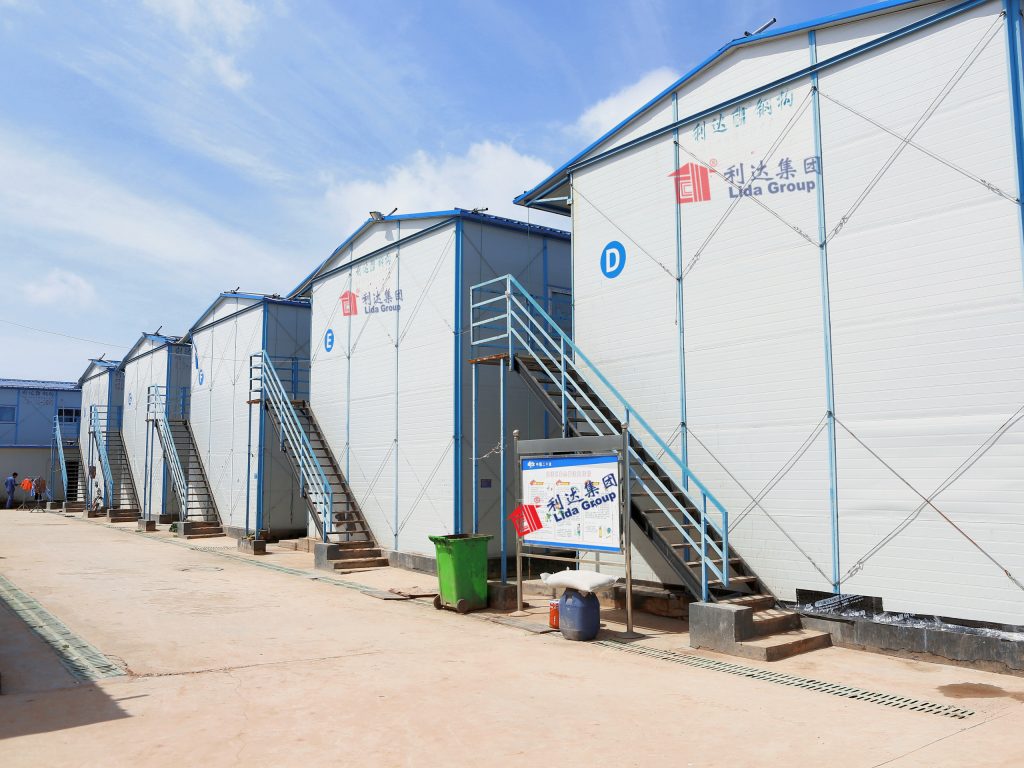
2. Understanding Lida Group: A Pioneer in Fast-Track Prefabrication
Lida Group’s journey to becoming a leader in fast-assemble prefab housing began over [X] years ago, with a vision to transform the construction industry by making high-quality housing more accessible, efficient, and responsive to urgent needs. What started as a small manufacturing operation focused on steel structures and construction materials has grown into a global enterprise with a presence in over [X] countries, state-of-the-art production facilities, and a team of engineers, architects, and industry experts dedicated to innovation in prefabrication.
At the core of Lida Group’s success is its unwavering focus on speed without sacrificing quality. The company recognized early on that prefabrication—building components off-site in controlled factory environments—was the key to reducing construction timelines. However, many prefabricated solutions on the market still required complex assembly processes, skilled labor, and lengthy on-site preparation. Lida Group set out to solve these pain points by developing a system that would streamline every step of the process, from design and manufacturing to transportation and assembly.
Over the years, Lida Group has invested heavily in research and development (R&D), allocating a significant portion of its annual revenue to advancing prefabrication technologies. This commitment has led to a portfolio of patents focused on modular design, quick-connect components, and lightweight yet durable materials—all of which contribute to the speed of its prefab mobile houses. The company has also obtained numerous international certifications, including ISO 9001 (Quality Management), ISO 14001 (Environmental Management), and OHSAS 18001 (Occupational Health and Safety), ensuring that its fast-assemble homes meet the highest global standards for safety, performance, and sustainability.
Today, Lida Group serves a diverse range of clients, including governments, non-governmental organizations (NGOs), construction companies, and individual homeowners. Its easy-assemble prefab mobile houses using sandwich panels are deployed in a variety of contexts, from emergency shelter operations and construction site accommodations to permanent residential housing in underserved communities. In each case, speed remains a defining feature—allowing clients to address housing needs quickly and efficiently.
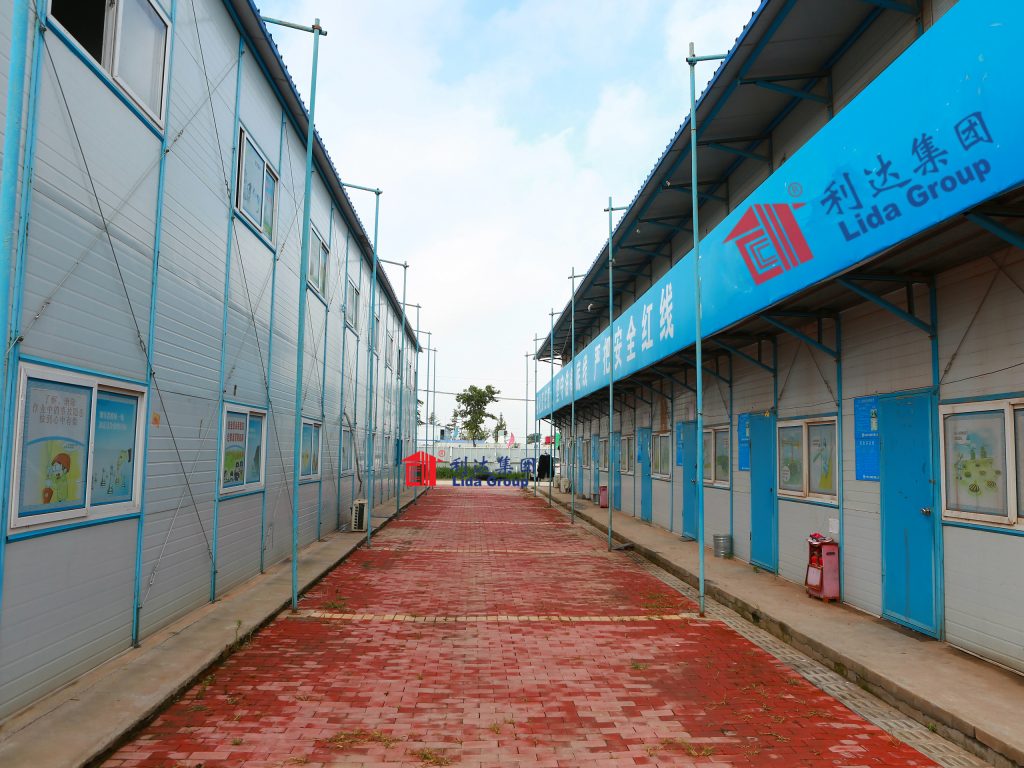
3. The Technology Behind Speed: Lida’s Easy-Assemble Prefab Mobile House System
Lida Group’s ability to deliver prefab mobile houses at unprecedented speeds lies in its integrated system of modular design, precision manufacturing, and user-friendly assembly. At the heart of this system are sandwich panels—composite materials that combine strength, insulation, and lightweight properties—paired with innovative connection mechanisms and pre-installed components. Together, these elements eliminate the delays and inefficiencies of traditional construction, enabling rapid deployment and assembly.
3.1 Modular Design: The Foundation of Rapid Assembly
Lida’s prefab mobile houses are built on a modular design principle, meaning the entire structure is divided into prefabricated modules that are manufactured in the company’s factories and then transported to the site for assembly. Each module is a self-contained unit that includes walls, floors, or ceilings, and is designed to fit seamlessly with other modules—like pieces of a puzzle.
The modules are standardized in size and shape, but can be customized to meet specific needs (e.g., number of rooms, layout, fixtures). For example, a standard 2-bedroom mobile home might consist of 6–8 modules: 4 wall modules, 2 floor modules, 1 ceiling module, and 1 module for the bathroom/kitchen. Each module is engineered to be lightweight (typically weighing between 200–500 kg) and compact, making them easy to transport in standard shipping containers or on flatbed trucks.
The key advantage of this modular design is that it eliminates the need for on-site cutting, measuring, or fitting of materials—tasks that are time-consuming and prone to error in traditional construction. Instead, modules are manufactured to exact specifications in a controlled factory environment, ensuring that they fit together perfectly on-site. This not only speeds up assembly but also improves the overall quality and structural integrity of the home.
3.2 Sandwich Panels: Strength, Insulation, and Speed in One Material
Sandwich panels are the building blocks of Lida’s prefab mobile houses—and a critical factor in their speed and performance. These panels consist of three layers: two outer skins (usually made of galvanized steel or aluminum) and a core layer of insulation material (such as polyurethane foam, polystyrene, or rock wool).
The choice of sandwich panels offers several advantages that contribute to speed:
- Lightweight: Despite their strength, sandwich panels are significantly lighter than traditional building materials like bricks, concrete, or wood. This reduces the need for heavy equipment during transportation and assembly—modules can often be moved and positioned using small cranes, forklifts, or even manual labor (for smaller modules).
- All-in-One Functionality: Sandwich panels provide structural support, thermal insulation, and weather resistance in a single material. This eliminates the need for separate installation of framing, insulation, and exterior cladding—steps that add significant time to traditional construction. For example, a single sandwich panel wall module replaces the need for wooden framing, fiberglass insulation, and vinyl siding.
- Durability: The outer metal skins of sandwich panels are resistant to corrosion, UV rays, and impact, while the insulation core provides excellent thermal performance. This means that Lida’s homes require minimal maintenance over time—but more importantly for speed, it means that panels can be stored outdoors for short periods without damage, reducing delays caused by material storage issues on-site.
Lida Group manufactures its own sandwich panels in-house, allowing for tight quality control and the ability to customize panels to meet specific climate or design requirements. For example, panels with polyurethane foam cores are used in cold climates for superior insulation, while rock wool core panels are used in fire-prone areas for their fire-retardant properties. This flexibility ensures that homes are not only fast to assemble but also well-suited to their environment.
3.3 Quick-Connect Mechanisms: Tool-Free Assembly for Speed
Perhaps the most innovative feature of Lida’s prefab mobile house system is its quick-connect mechanisms—designed to allow modules to be joined together quickly and securely without the need for specialized tools or skilled labor.
These mechanisms vary slightly depending on the type of module (wall, floor, ceiling) but typically involve interlocking grooves, snap-fit connectors, or simple bolt-and-nut systems. For example, wall modules are equipped with metal “tongue-and-groove” edges that fit together tightly, with pre-drilled holes for bolts that can be tightened using a basic wrench or even a manual screwdriver. Floor modules feature interlocking joints that create a seamless, stable surface when connected, while ceiling modules attach to wall modules using clip-on brackets.
In many cases, the connection process is so simple that it can be completed by semi-skilled workers with just a few hours of training. Lida Group provides detailed, step-by-step assembly manuals (with diagrams and videos) for each home design, guiding workers through every stage of the process. For example, a team of 4–5 workers can typically assemble a 50-square-meter 2-bedroom home in just 2–3 days—compared to 4–6 weeks for a traditional home of the same size.
To further speed up assembly, Lida pre-installs key components in modules before they leave the factory. This includes windows, doors, electrical wiring, plumbing lines, and even basic fixtures like light switches and sink faucets. For example, a bathroom module arrives on-site with a pre-installed toilet, shower, and vanity—eliminating the need for on-site plumbing installation. Electrical modules come with pre-wired outlets and lighting fixtures, ready to be connected to a power source. This pre-installation cuts down on on-site work by 30–40%, further reducing assembly time.
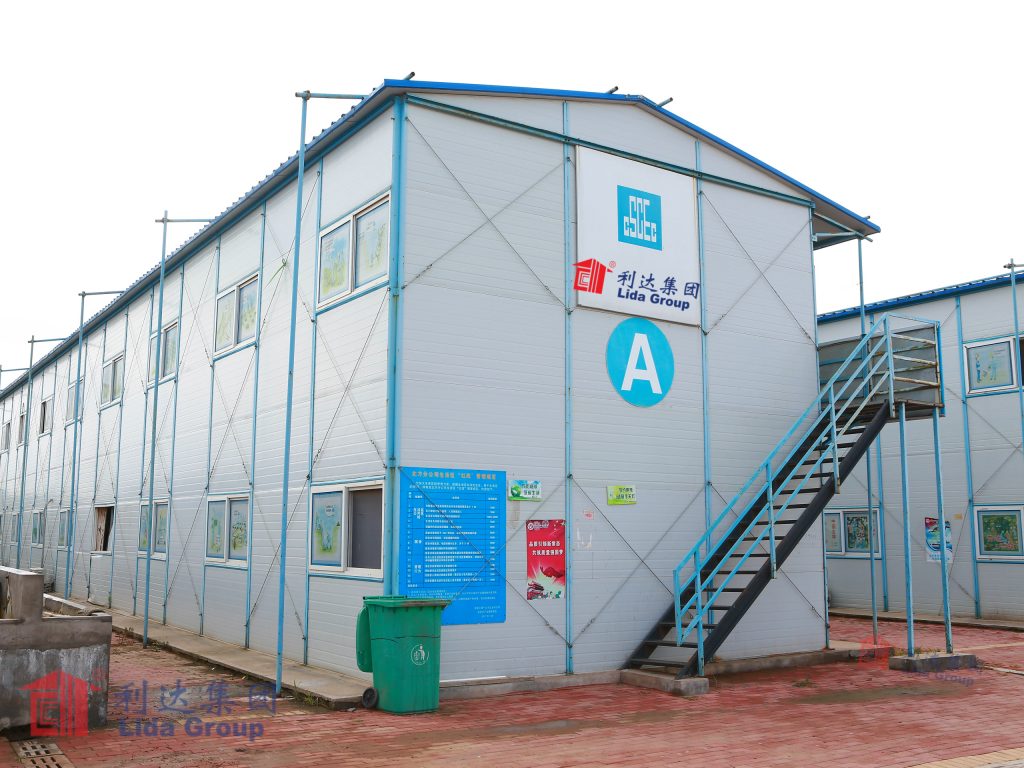
4. Speed in Action: Key Stages of Lida’s Prefab Mobile House Deployment
The speed of Lida’s prefab mobile houses is not limited to assembly alone—it extends to every stage of the deployment process, from design and manufacturing to transportation and final setup. By streamlining each step, Lida Group is able to deliver homes to clients in a fraction of the time required by traditional construction.
4.1 Design: Fast Customization Without Delays
One of the biggest delays in traditional construction is the design phase—custom homes can take weeks or months to design, with multiple revisions and approvals. Lida Group has streamlined this process by offering a library of pre-designed home templates that can be customized quickly to meet client needs.
Clients start by selecting a base template (e.g., 1-bedroom, 2-bedroom, or 3-bedroom home, or a specialized design like an office or classroom). They can then customize details such as layout (e.g., moving a bathroom or adding a porch), materials (e.g., choosing a specific color for the outer panel skins), and fixtures (e.g., adding solar panels or a water heater). Lida’s in-house design team uses advanced 3D modeling software to make these customizations in real time—typically completing the final design within 1–3 days.
For clients with more complex needs (e.g., large-scale housing projects for communities or disaster relief), Lida’s design team works closely with them to create fully custom solutions—but even these projects are completed in a fraction of the time of traditional design processes. For example, a design for a 100-home community can be finalized in 2–4 weeks, compared to 2–3 months for a traditional community design.
4.2 Manufacturing: Precision and Speed in Factory Production
Once the design is approved, manufacturing of the modules begins in Lida’s state-of-the-art factories. Unlike traditional construction, which is subject to delays from weather, labor shortages, or material shortages, factory manufacturing is controlled and efficient.
Lida’s factories use automated production lines to cut, shape, and assemble sandwich panels into modules. This automation ensures precision (modules are manufactured to within 1mm of their design specifications) and speed—each factory can produce up to 50 modules per day, depending on the home size and complexity. For example, manufacturing the modules for a 50-home project takes just 2–3 weeks, compared to the months of on-site construction required for traditional homes.
Quality control is integrated into every step of the manufacturing process. Each module is inspected for structural integrity, insulation performance, and the proper installation of pre-installed components before it leaves the factory. This eliminates the need for on-site rework—another common source of delays in traditional construction—and ensures that modules are ready for immediate assembly on-site.
4.3 Transportation: Compact and Efficient Shipping
Transportation is another area where Lida’s prefab mobile houses excel in speed. The lightweight, compact modules can be stacked and loaded into standard shipping containers or onto flatbed trucks, maximizing the number of modules that can be transported in a single trip.
For example, a 20-foot shipping container can hold up to 8 wall modules or 6 floor/ceiling modules—enough to build one 50-square-meter home. A 40-foot container can hold twice that amount. This efficiency reduces the number of transportation trips required, cutting down on shipping time and costs. For domestic projects, modules can be transported by truck and delivered to the site within 1–3 days (depending on distance). For international projects, modules are shipped by sea—typically arriving at their destination within 2–4 weeks.
Lida Group also works closely with logistics partners to coordinate transportation schedules, ensuring that modules arrive on-site exactly when they are needed for assembly. This “just-in-time” delivery eliminates the need for on-site storage of materials—another source of delays in traditional construction, where materials may sit idle for weeks waiting for other phases of the project to complete.
4.4 Assembly: From Modules to Home in Days
The final stage—assembly—is where the speed of Lida’s system is most evident. As discussed earlier, the modular design, quick-connect mechanisms, and pre-installed components allow for rapid assembly by semi-skilled workers.
The assembly process typically follows these steps:
- Site Preparation: Unlike traditional construction, which requires extensive site preparation (e.g., digging foundations, pouring concrete slabs), Lida’s prefab mobile houses can be installed on a simple, level surface. This can be a gravel pad, a concrete slab (poured in 1–2 days), or even a steel frame base (assembled in a few hours). Site preparation usually takes 1–2 days.
- Module Delivery and Unloading: Modules are delivered to the site and unloaded using a small crane or forklift. This takes a few hours, depending on the number of modules.
- Module Assembly: Workers connect the floor modules first, followed by wall modules, and then ceiling modules. Quick-connect mechanisms ensure that modules fit together tightly and securely. Pre-installed windows, doors, and fixtures are checked and adjusted as needed. This phase typically takes 2–3 days for a standard 2-bedroom home.
- Final Connections: Electrical and plumbing systems are connected to external sources (e.g., power grid, water supply, sewage system). This takes a few hours to a day, depending on the complexity of the systems.
- Quality Check and Handover: A final inspection is conducted to ensure that the home meets Lida’s quality standards. Once approved, the home is handed over to the client. This takes a few hours.
In total, the entire process from design approval to handover can take as little as 4–6 weeks for a single home—compared to 4–6 months for a traditional home. For large-scale projects (e.g., 100 homes), Lida can deploy multiple assembly teams to work in parallel, completing the entire project in 2–3 months.
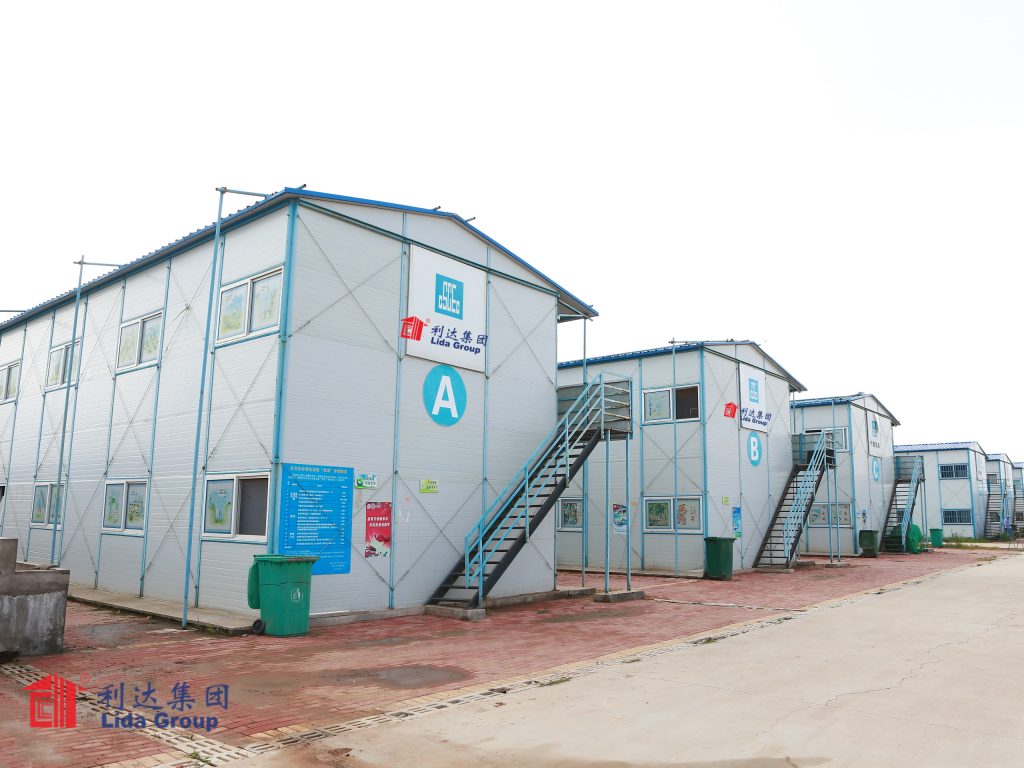
5. Case Studies: Speed Delivering Real-World Impact
The speed of Lida Group’s easy-assemble prefab mobile houses is not just a technical achievement—it is a solution that delivers real-world impact for communities, organizations, and individuals facing urgent housing needs. The following case studies highlight how Lida’s speed has made a difference in diverse contexts around the world.
5.1 Case Study 1: Emergency Shelter for Earthquake Victims in Nepal
In April 2023, a 6.4-magnitude earthquake struck western Nepal, destroying over 15,000 homes and displacing more than 100,000 people. With monsoon season fast approaching (just 6 weeks away), the Nepalese government and international aid organizations faced an urgent need to provide temporary shelter to prevent further suffering.
Lida Group was contacted by the International Federation of Red Cross and Red Crescent Societies (IFRC) to provide 500 emergency shelter homes. The timeline was tight: shelters needed to be designed, manufactured, shipped, and assembled before the first heavy rains hit.
Lida’s team moved quickly:
- Design Phase: Within 48 hours, Lida’s design team created a customized emergency shelter design—30-square-meter homes with rock wool core sandwich panels (for fire resistance and insulation) and waterproof roofing. The homes were designed to accommodate families of 4–5 and included basic fixtures like beds, a small kitchenette, and a portable toilet.
- Manufacturing Phase: Lida’s factory in India (closer to Nepal for faster shipping) began manufacturing modules immediately. The factory operated 24 hours a day, producing 50 modules per day. The entire 500-home order was manufactured in 10 days.
- Transportation Phase: Modules were transported by truck from India to Nepal, a 3-day journey. Lida coordinated with local logistics partners to ensure that modules cleared customs quickly and arrived at the disaster site on schedule.
- Assembly Phase: Lida deployed 10 assembly teams (each consisting of 5 workers) to the affected region. Each team was trained in 1 day, and began assembling homes. Teams were able to complete 5 homes per day per team—meaning all 500 homes were assembled in 10 days.
In total, Lida Group delivered 500 emergency shelters in just 27 days—well before the start of monsoon season. The shelters provided safe, dry housing for over 2,500 people, protecting them from the rains and preventing the spread of waterborne diseases. The IFRC’s Nepal representative, Rajesh Kumar, said: “Lida’s speed was
instrumental in saving lives. We didn’t just need shelters—we needed them fast. Lida delivered, and their homes have given families a sense of safety and dignity during an incredibly difficult time.”
Months later, as Nepal entered the recovery phase, many families chose to keep the Lida shelters as permanent homes due to their durability and comfort. The Nepalese government later partnered with Lida Group to build an additional 1,000 homes for communities affected by the earthquake, citing the speed and quality of the initial deployment as key factors in the decision.
5.2 Case Study 2: Construction Site Accommodation for a Wind Farm Project in Canada
In 2022, a major renewable energy company was awarded a contract to build a 300-turbine wind farm in northern Alberta, Canada. The project required 200 workers to be on-site for 18 months, but the remote location had no existing housing infrastructure. The company needed accommodation to be ready within 8 weeks to avoid delaying the project’s start date—a timeline that was impossible with traditional construction.
After evaluating several housing solutions, the company chose Lida Group’s easy-assemble prefab mobile houses for their speed and ability to withstand Alberta’s harsh winter conditions (temperatures as low as -30°C).
Lida’s approach was tailored to the project’s needs:
- Design Phase: Lida’s team worked with the energy company to design 50 2-bedroom homes (each 60 square meters) and 5 communal buildings (dining hall, laundry facility, medical clinic). The homes were equipped with polyurethane foam core sandwich panels for superior insulation, double-glazed windows, and electric heating systems. The design was finalized in 3 days.
- Manufacturing Phase: Lida’s factory in British Columbia manufactured the modules, operating 12-hour shifts to meet the tight deadline. The factory produced 20 modules per day, completing all 350 modules (for 50 homes and 5 communal buildings) in 17 days.
- Transportation Phase: Modules were transported by truck to the wind farm site—a 2-day journey. Lida coordinated with local transport companies to ensure modules arrived in batches, aligning with the assembly schedule to avoid on-site storage.
- Assembly Phase: 8 assembly teams (each with 6 workers) were deployed. Despite cold weather, teams were able to assemble 6 homes per day. The entire housing complex was completed in 7 days, with communal buildings finished an additional 2 days later.
The energy company was able to start the wind farm project on schedule, avoiding costly delays. Workers praised the homes for their warmth and comfort, with many noting that the insulation was better than their permanent homes in nearby towns. “We were worried about living in prefab homes in winter, but these are warmer than I expected,” said Mike Thompson, a wind turbine technician. “And the fact that they were ready so fast meant we didn’t have to wait to start working—that’s a big win for everyone.”
5.3 Case Study 3: Permanent Housing for Underserved Communities in Kenya
Kenya faces a severe housing shortage, with over 60% of urban residents living in slums. In 2021, the Kenyan government launched the “Affordable Housing Programme” to build 500,000 low-cost homes by 2025. To meet this target, the government needed a construction solution that was fast, affordable, and suitable for Kenya’s tropical climate.
Lida Group was selected as a key partner for the programme, tasked with building 10,000 homes in rural and semi-urban areas of Nairobi and Mombasa. The goal was to deliver homes in 6 weeks per batch of 100—far faster than the 6-month timeline for traditional brick-and-mortar homes.
Lida’s solution was designed for scalability and speed:
- Design Phase: Lida created a standardized 2-bedroom, 1-bathroom home (45 square meters) with polystyrene core sandwich panels (for heat resistance) and a metal roof. The design included space for solar panels (to address Kenya’s frequent power outages) and a small outdoor kitchen (aligned with local cultural practices). The base design was finalized in 2 days, with minor customizations for each site completed in 1 day per batch.
- Manufacturing Phase: Lida established a local assembly plant in Nairobi to reduce transportation time and costs. The plant produced 100 modules per day, with each batch of 100 homes requiring 800 modules (8 modules per home). Manufacturing for a 100-home batch took 8 days.
- Transportation Phase: Modules were transported by truck from the Nairobi plant to construction sites, with delivery taking 1–2 days depending on the location.
- Assembly Phase: 15 local teams (trained by Lida) were deployed. Each team could assemble 5 homes per day, meaning a 100-home batch was completed in 20 days. Site preparation (gravel pads and basic utilities) took an additional 5 days, bringing the total timeline per batch to 35 days—well under the 6-week target.
By 2023, Lida Group had delivered 4,500 homes as part of the programme, with plans to complete the remaining 5,500 by 2024. Homeowners, many of whom had previously lived in slums, expressed gratitude for the speed and quality of the homes. “I never thought I’d own a home this soon,” said Mary Wanjiku, a single mother of two who moved into her Lida home in 2022. “The fact that it was built so fast means I didn’t have to wait years to give my kids a safe place to live. That’s life-changing.”
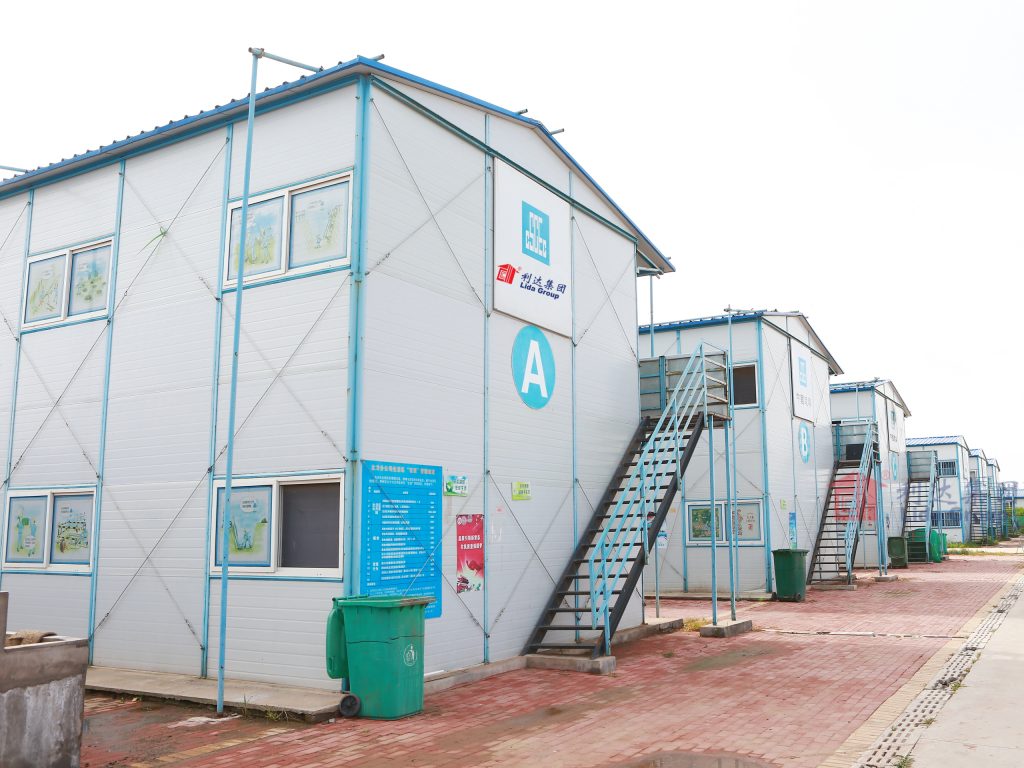
6. Market Feedback and Industry Impact
Lida Group’s focus on speed has not only solved immediate housing needs but also disrupted the construction industry, setting a new standard for how fast high-quality homes can be built. The company’s easy-assemble prefab mobile houses have received widespread acclaim from clients, industry experts, and global organizations.
6.1 Client Testimonials
Across emergency relief, construction, and affordable housing sectors, clients consistently highlight speed as Lida’s greatest strength—paired with quality and affordability.
- From disaster relief: “In emergencies, time is lives. Lida’s ability to deliver shelters in weeks instead of months is unmatched,” said Sarah Johnson, emergency response coordinator at Oxfam International, which has partnered with Lida on 5 disaster relief projects.
- From construction: “We’ve used Lida’s homes on 3 remote projects now, and each time, the speed has saved us millions in delay costs,” said David Lee, project director at a global construction firm. “And the best part? We don’t have to compromise on quality—workers love the homes, which boosts retention.”
- From affordable housing: “The Kenyan government’s Affordable Housing Programme would not be on track without Lida,” said James Mwangi, housing secretary for Kenya. “Their speed allows us to reach more families faster, and their homes are built to last—something that’s crucial for long-term community development.”
6.2 Industry Recognition
Lida Group’s innovation in speed has earned it numerous industry awards and certifications. In 2022, the company won the “Global Construction Speed Innovation Award” at the International Prefab Expo, with judges noting that Lida “has redefined what’s possible in prefabrication by prioritizing speed without sacrificing safety or quality.”
The company’s homes have also received certification from the Global Housing Quality Standard (GHQS), a rigorous certification that evaluates durability, energy efficiency, and safety. Lida is one of only a handful of prefab housing manufacturers to receive GHQS certification for speed of delivery, with inspectors confirming that Lida’s homes meet quality standards even with their rapid assembly timeline.
6.3 Impact on the Construction Industry
Lida’s success has forced other construction companies to rethink their approach to speed. Many traditional firms are now investing in prefabrication technologies, while prefab competitors are accelerating their own assembly processes to match Lida’s timelines. This shift is benefiting the industry as a whole, making fast, high-quality housing more accessible to clients worldwide.
Lida has also played a role in addressing labor shortages in construction. By designing homes that can be assembled by semi-skilled workers, the company has created job opportunities for people with limited construction experience. In Kenya, for example, Lida has trained over 500 local workers in assembly techniques, many of whom have gone on to start their own small construction businesses using Lida’s technology.

7. Future Plans: Enhancing Speed and Expanding Reach
Lida Group is committed to further improving the speed of its easy-assemble prefab mobile houses while expanding access to underserved regions and sectors. The company’s future plans focus on three key areas: technology innovation, regional expansion, and sector-specific solutions.
7.1 Technology Innovation: Faster Assembly and Smarter Homes
Lida’s R&D team is developing new technologies to reduce assembly time even further. One key focus is automated assembly tools, such as lightweight robotic arms that can assist with module connection. These tools are being tested in Lida’s factories and are expected to reduce assembly time by an additional 20% once fully deployed.
The team is also working on self-locking modules—a next-generation quick-connect mechanism that eliminates the need for bolts or tools. Early prototypes show that self-locking modules can reduce the time to connect two wall modules from 10 minutes to 2 minutes, significantly speeding up the assembly process.
In addition to speed, Lida is integrating smart home features into its designs without slowing down production. This includes pre-installed smart thermostats (to optimize energy use), solar panel compatibility, and mobile app-controlled lighting. These features are added during the factory manufacturing phase, so they do not increase assembly time—allowing Lida to deliver smart, fast homes at no extra cost to clients.
7.2 Regional Expansion: Localized Production for Faster Delivery
To reduce transportation time and costs, Lida plans to establish 10 new local assembly plants in key regions by 2026, including locations in Brazil, India, Nigeria, and South Africa. These plants will manufacture modules locally, using regional materials where possible, and will be able to deliver modules to construction sites within 1–2 days.
Localized production will also allow Lida to better adapt to regional climate and cultural needs. For example, the Brazil plant will focus on homes with heat-resistant panels and rainwater harvesting systems, while the Nigeria plant will design homes with insect-resistant screens and open-air layouts (aligned with local preferences).
7.3 Sector-Specific Solutions: Speeding Up Niche Housing Needs
Lida is developing specialized fast-assemble solutions for niche sectors, including:
- Military Housing: Lightweight, portable homes that can be assembled in 4 hours by 2 soldiers, designed for rapid deployment in conflict zones or training exercises.
- Tourism Accommodation: Modular cabins that can be assembled in 1 day, allowing resorts and campgrounds to quickly expand capacity during peak seasons.
- Healthcare Facilities: Small clinics (30 square meters) with infection-resistant sandwich panels, designed to be assembled in 3 days for rural areas with limited medical infrastructure.
These sector-specific solutions will leverage Lida’s existing speed-focused technology while adding features tailored to unique needs—ensuring that even specialized housing can be delivered quickly.
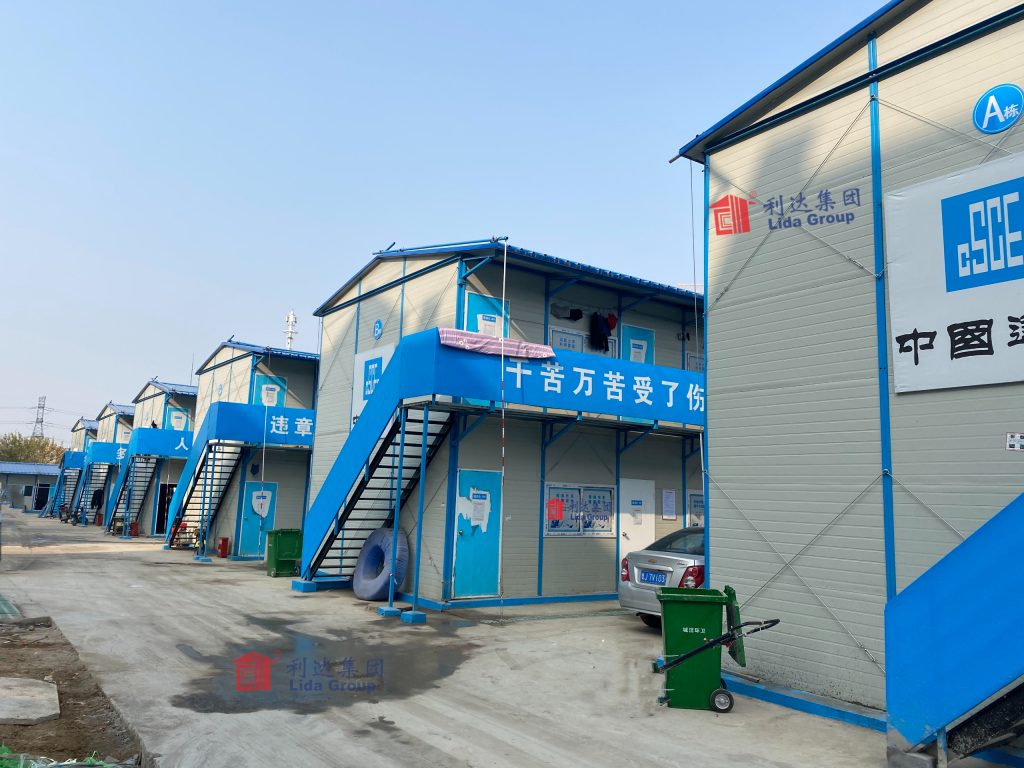
8. Conclusion
Lida Group has set a new standard for speed in the housing industry with its easy-assemble prefab mobile houses using sandwich panels. In a world where traditional construction struggles to meet the urgent demand for safe, affordable homes, Lida’s integrated system of modular design, sandwich panels, and quick-connect mechanisms delivers housing in a fraction of the time—without compromising on quality, durability, or sustainability.
From emergency shelters for earthquake victims in Nepal (delivered in 27 days) to construction site accommodation in Canada (ready in 9 days) and permanent homes for underserved communities in Kenya (completed in 35 days per batch), Lida’s speed has made a tangible impact on millions of lives. Clients across sectors—governments, NGOs, construction firms, and homeowners—consistently praise the company’s ability to deliver homes fast, often noting that Lida’s solutions have helped them avoid delays, reduce costs, and improve quality of life.
Beyond its immediate client impact, Lida Group is reshaping the construction industry. By proving that fast assembly does not mean low quality, Lida has inspired competitors to invest in speed-focused technologies, making fast, high-quality housing more accessible worldwide. The company’s commitment to training local workers and establishing regional plants is also creating economic opportunities and ensuring that its solutions are tailored to local needs.
Looking to the future, Lida’s plans to enhance technology (with automated tools and self-locking modules), expand regionally, and develop sector-specific solutions will further solidify its position as a leader in fast-assemble housing. As the global housing shortage continues to grow, Lida Group’s focus on speed will remain more critical than ever—providing a blueprint for how the construction industry can meet urgent housing needs and build a more inclusive, sustainable future.
In the end, Lida Group’s success is about more than building homes quickly. It is about giving people—whether displaced by disaster, working on a remote project, or living in a slum—access to safe, stable housing when they need it most. By setting a new standard for speed, Lida is not just changing how homes are built; it is changing lives.

Related news
-
Lida Group Makes Quality Housing Accessible with Low-Cost Sandwich Panel Houses Designed as Easy-Assemble Prefab Mobile Homes
2025-09-24 17:52:15
-
Building for the Future: Lida Group's Low-Cost Sandwich Panel Houses Combine Energy Efficiency with Easy-Assemble Design
2025-09-25 09:52:13
-
Lida Group's Innovative Easy-Assemble Building Technology Simplifies Construction of Durable Low-Cost Sandwich Panel Homes
2025-09-25 09:46:54
contact us
- Tel: +86-532-88966982
- Whatsapp: +86-13793209022
- E-mail: sales@lidajituan.com


